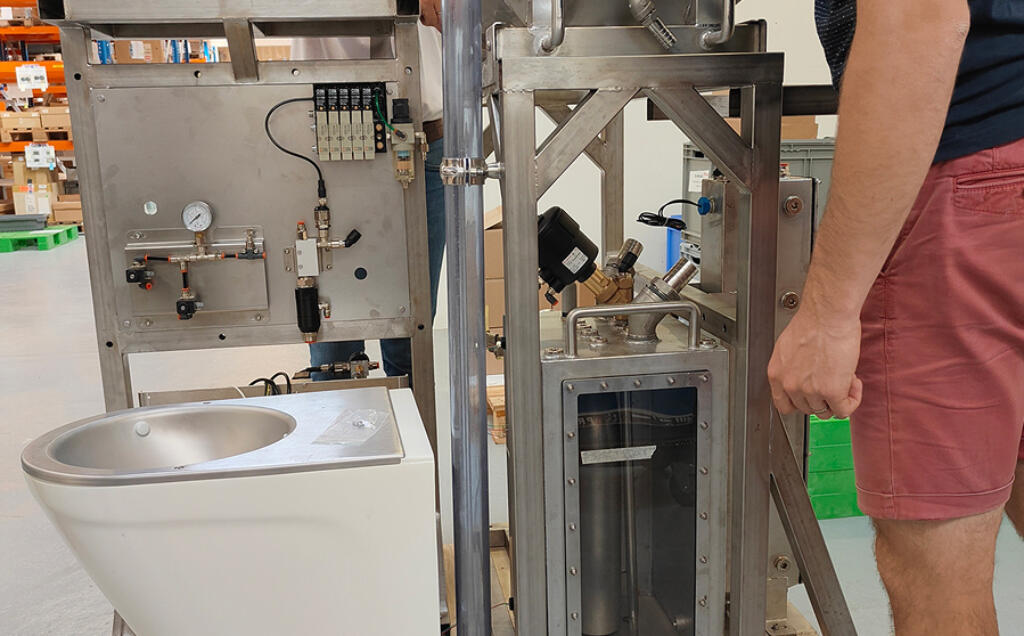Real-world impact
Today, waste water is often stored in large tanks that must be emptied multiple times per week. Electrochemical sanitation enables reliable, high-quality, and on-demand toilet water treatment, all while taking up very little space.

A case study in mobile sanitation

The challenge
Most public transport systems require onboard restroom facilities for passengers, but these come with various environmental and operational challenges. Thus, in the past, trains discharged toilet waste directly onto tracks, causing unpleasant side effects for people living nearby. Today, waste water is often stored in large tanks that must be emptied multiple times per week, increasing labour costs and reducing fleet availability. While for ships, discharging waste water into the open sea directly pollutes the environment. Irregular use of restroom facilities in both cases call for a non-biological predictable treatment system that meets discharge limits. Additional challenges include the limited space on board, making the installation of elaborate waste water systems simply impossible.

The solution
Electrochemical sanitation enables reliable, high-quality, and on-demand toilet water treatment, all while taking up very little space due to the absence of an aeration space. Combined with a modular design, the system can be installed in small compartments and even makes retrofitting feasible in many cases.